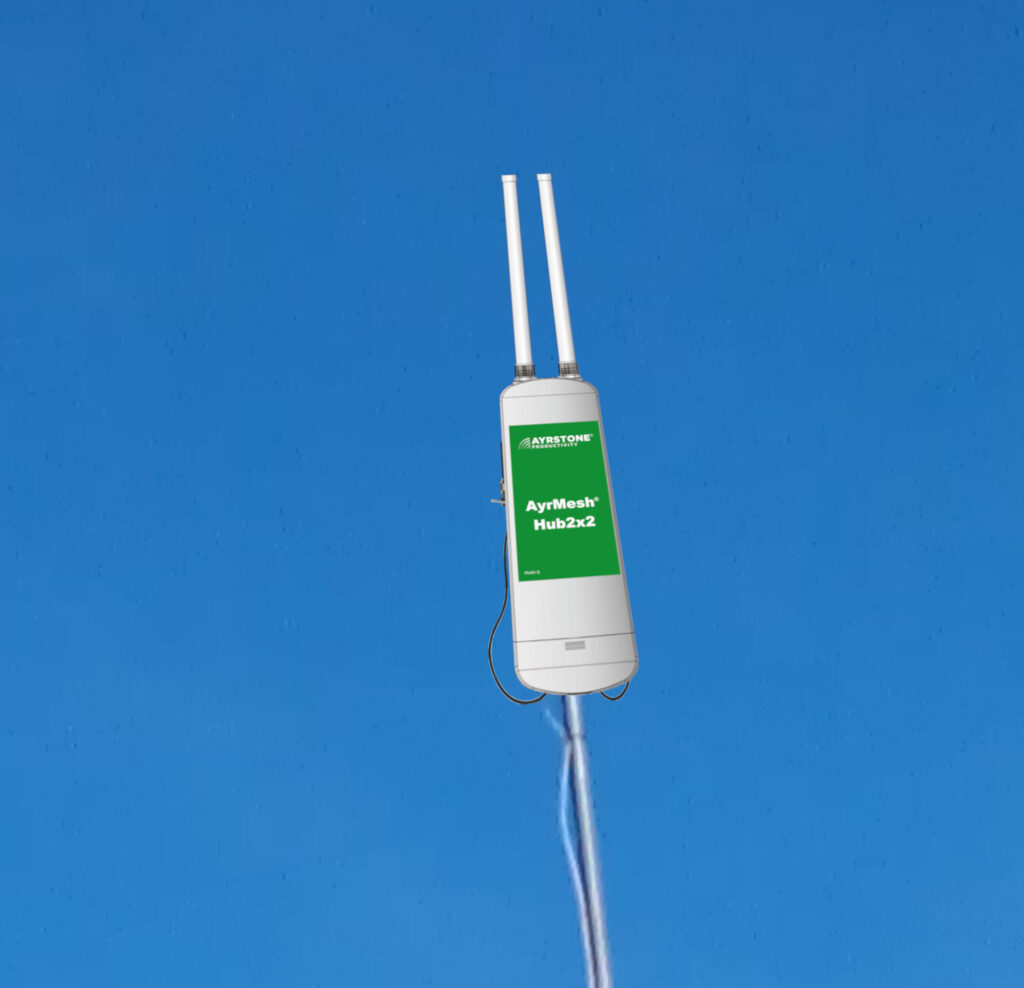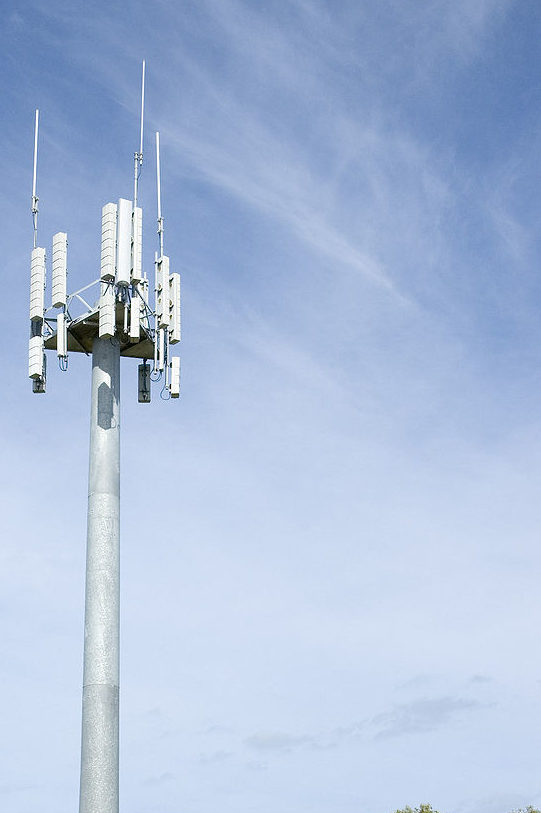
For many installations, the most difficult (and most expensive) part of building a farm-wide AyrMesh network is getting the Hubs up in the air. To provide maximum maximum range, the Hubs have to have a clear Fresnel zone between them, which means they really need to be at least 25 feet above any obstructions that may lie between them. If your house is on top of a hill in the middle of Nevada, that may be very easy to achieve; if you are in a valley in an orchard surrounded by 50-foot trees, then it’s more difficult.
Most farming country is pretty flat or on rolling hills, so getting the Hubs in the air typically involves some sort of a pole or tower, and that typically involves some construction. There are plenty of ways to get little radios like the AyrMesh Hubs up in the air; if you’re fortunate enough to have buildings in the right places, poles on top of tall buildings frequently work very well. If not, there are myriad possibilities, from utility poles (which can frequently be obtained quite inexpensively) to flagpoles to normal radio towers.
Maintenance
One of the issues you’ll face eventually will be the need to service the Hubs, so you’ll either have to go up to the Hub on top of the pole/tower, or you’ll need a way to bring the Hub down to you. If you have access to a tall scissor lift (that you can get to the Hub’s location) or a bucket truck, that can be very simple.
One quick mention here: good Ethernet cables (link to https://ayrstone.com/www/ethernet-cable/) can reduce the probability and frequency of having to go up the pole or tower. Good strain relief (so the cable can’t pull out of the Hub’s port) and “drip loops” (so water can’t travel down the cable into buildings or enclosures) are also very important to keep you from having to service the Hubs.

Poles vs. Towers
Good, strong towers can be climbed (do you want to?), while poles generally cannot. However, another approach is to use a tower or pole that can “telescope” up and down and even “tilt over” to allow you to access the Hub while you’re on (or much closer to) the ground. One product that was recently brought to our attention for this is from Beacon Pole, which tilts over, making it very easy to service the Hubs. It’s a lot more expensive than a used telephone pole, but, over the life of your farm, it’s likely to more than make up its cost in time saved updating equipment.
Do-it-yourself vs. hire a pro
Installing any tall pole or tower requires some construction expertise and work, and, to extend a network all the way across your farm or ranch, you may need to install several poles and/or towers. Even if you have the requisite skills, it’s a considerable investment of time that might be better used on other aspects of your farm. There are construction companies that specialize in installing poles and towers for cellular telephone companies, utilities, and other customers; utilizing them to put infrastructure on your farm might be a better solution. In particular, we can recommend our friends at Augusta Towers in Grand Rapids, MI – they’ll take on construction jobs from Michigan to northern Indiana and Ohio. If you’re not in their region, check locally for construction companies who can install towers, and work with them.

Invest in your farm
You should view the investment in poles and towers as a long-term investment in your farm; you may install AyrMesh Hubs up there today (and replace them over time with newer, better AyrMesh Hubs over time), but you may also need them for other wireless technologies like LoRa, HaLo, or other future wireless networking technologies that may come to the farm. It’s more likely that there will be more need for wireless networking in the future, not less, so investing in the infrastructure to support it now will pay off. I’ll have more to say on this…
